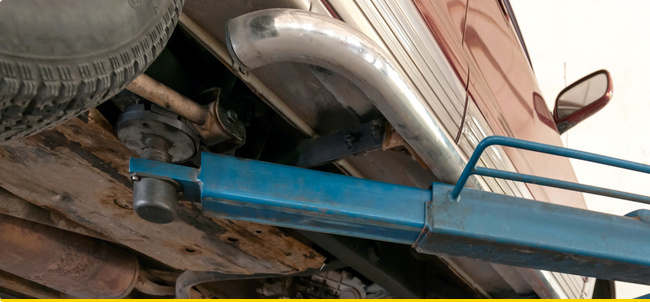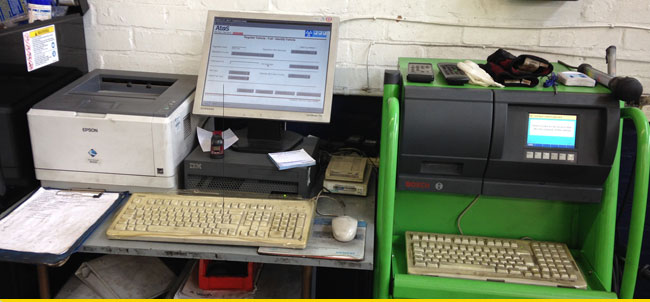Diagnostics
All vehicles will have a variety of warning lights, which are there to alert you to a range of possible problems with your vehicle. This can range from a faulty light bulb or low washer fluid, to a potentially more serious problem with your brakes or engine. So never ignore a warning light, and take action straightaway.
Often you can check your car handbook and this will help you to resolve the issue. However, if it is more serious call us on 020 8868 0088.
Our highly skilled mechanics have the latest diagnostic equipment that covers all makes of car, which can be plugged into your vehicle’s system to analyse why a warning light has come on. Most of the time, the fault can be fixed fairly easily. However, if the warning light is highlighting a more serious problem, we can provide you with a no obligation quote to repair your vehicle. Warning lights are there to alert you to problems so ignoring them is not advised as it can put your safety and the safety of others at risk.
We at PMC of Pinner have the most advanced and sophisticated diagnostic tools for all makes and models. Most of today’s vehicles are controlled by electronics with more devices being developed and fitted to vehicles each year. The most important one to be built into vehicles has to be the Engine Management System.
It is the brain of the car that controls the fuel supply and the ignition by combining the two separate functions into one main system. The Engine Management System controls the whole of the combustion process, making the engine more efficient and less polluting than ever before. The downside is that if it does go wrong it can be very difficult and expensive to put right. This is when one of our skilled technicians can be of help, since it requires specialist knowledge and test equipment to diagnose any faults that may be in the system.
There are several types of system and each manufacturer has their own particular variation. Diesel engines now also have Engine Management System controlling the fuel being injected. The system works by using sensors located on the engine. These sensors measure the speed and the temperature of the air intake, the speed and position of the crankshaft. This information is then processed and the end result is that of the fuel being delivered to the engine in precisely the correct amount at any given time. This makes the engine more efficient, economical, less polluting and more powerful. The fuel is ‘squirted’ into the engine at high pressure and at a pre-determined rate by electronically controlled injectors. The ECM allows for better combustion of all the fuel entering the engine and also controls the ignition.
- Single point Injection:
- One injector only, located in the inlet manifold of the engine, where a carburettor would normally be, is called Single point injection.
- Multipoint Injection:
- Multipoint, more sophisticated and efficient, instead has an injector for each cylinder, also located in the inlet manifold.
- Direct Injection:
- Often called DGi or GDi, these letters stand for Direct Gasoline Injection. With these systems fuel is injected directly into the engine’s combustion chambers at extremely high pressures.
- Air Flow Meter:
- This device measures the amount of air being drawn into the engine so that the fuel delivery can be calculated to mix with the air in the required quantities.
- Throttle Position Sensor:
- This is the sensor that constantly measures the movement and position of your accelerator pedal.
- Oxygen Sensor:
- This sensor is fitted in the exhaust and measures the oxygen content of the burnt gases. If, for example, the oxygen levels are incorrect, the ECM is instructed to vary the fuel supply until it reaches the desired level. This is usually referred to as the Lambda=1 value.
- Temperature Sensors:
- These sensors measure the engine coolant and intake air temperatures. Typically, if the engine is cold then the ECM will know to open the injectors for a longer period to increase the fuel delivery, much like an automatic choke on a carburettor.
- Crankshaft Position Sensor:
- This sensor is actually the key part of the system. If it doesn’t sense the crankshaft moving the system will not even operate. It serves to cut off fuel supply when the engine is not running and of course to calculate the speed at which the engine runs in normal usage
- Inertia Switch:
- This is usually located either in the very front or rear of the car. It primarily has a safety function. In the event of an impact the switch is activated and the fuel supply is cut off, to reduce the danger of fire.
Avoid using the boost function present on some battery chargers to start the car, as this can cause damage. Engine Management Systems are very complicated electronic systems and any work carried out by untrained personnel can result in unnecessary damage and expense.
We at PMC of Pinner have the most advanced and sophisticated diagnostic tools for all makes and models.
Don’t delay and put your mind at rest. Contact PMC of Pinner today and get your car inspected by our team of highly experienced and friendly mechanics. Call us on 020 8868 0088

























